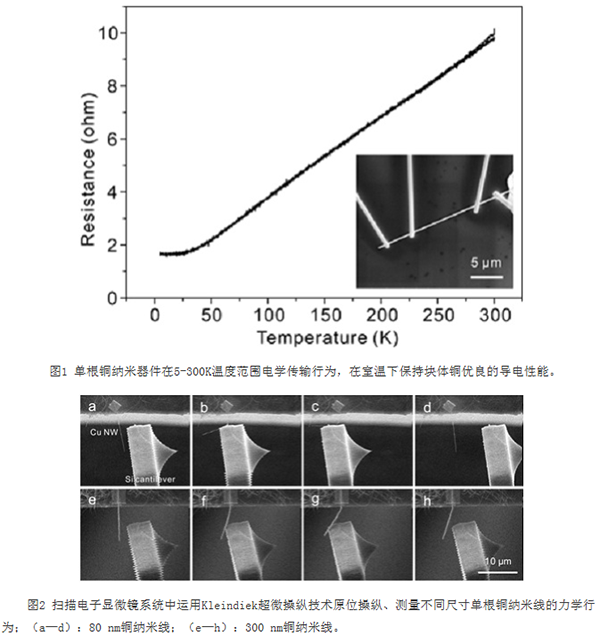
Nano-connected wires are the medium for signal and data transmission between nano-device structural units in the future. Therefore, the selection of suitable nano-connected wires has been a hot topic in recent years. In the semiconductor industry, metallic copper is widely used due to its good thermal conductivity and electrical conductivity. However, when metallic copper materials are made into nano-scale structures, they are easily oxidized and become unstable, thus limiting their mutual structure in nanodevices. Even in the application.
In recent years, research team led by Prof. Liu Jinhuai and researcher Huang Xingji, the chief scientist of the National Institute of Intelligent Machinery, Institute of Intelligent Physics, Chinese Academy of Sciences, Hefei Institute of Physical Research, led the research team on the construction of a single Cu@C nanodevice and the study of electrical transfer properties, type T A series of advances have been made in the study of the electrical properties of SnO2 nanowires as well as the research on the construction of nanocomposites with complicated SnO2 nanoribbons cross-linked structures and the electrical transport properties (Materials Today, 2011, 14, 42; Small, 2012, 8, 53; Small, 2013, 9, 2678).
Based on this, the team of researchers used octadecylamine (ODA) as a template to hydrothermally synthesize copper nanowires, and ODA+ adsorbed on the surface to inhibit oxidation. X-ray X-ray fine structure absorption (XAFS) analysis results show that Cu-N bonds exist on the surface of copper nanowires. Therefore, Cu-N bonds and ODA+ intermolecular interactions on the surface of copper nanowires form a protective film on the surface of copper nanowires. Copper nanowires are oxidized.
In order to study the electrical transmission behavior of single copper nanowires, an electrical device based on a single copper nanowire was constructed using FIB technology. The electrical test results showed that copper nanowires maintained good metal characteristics and the electrical resistivity of single copper nanowires at room temperature. It is 3.5×10-6Ω.cm, close to the conductivity of bulk copper.
In addition, the Kleindiek ultramicromanipulation technology was used to in-situ manipulate and measure the mechanical properties of single copper nanowires of different sizes in a scanning electron microscope system. The results show that the mechanical properties of copper nanowires are strongly dependent on the size, single copper nanometers The mechanical strength of the wire decreases as the diameter decreases, small-sized copper nanowires tend to be elastic and brittle, while large-sized copper nanowires tend to be ductile.
This study shows that the copper nanowires obtained by this method are expected to be the ideal connecting wires between nanostructured devices in the future. The relevant research results were accepted and published by the American Chemical Society ACS Nano (ACS Nano, 2015, online, Manuscript ID: nn-2014 -06583e).
The above research work has received the support of the National Major Scientific Research Plan Project, the Chinese Academy of Sciences' 100 Talented Personnel Program for the Introduction of Overseas Outstanding Talents, and the National Natural Science Foundation.
Window Screen
A window screen (also known as insect screen, bug screen, fly screen, flywire, Wire Mesh, or window net) is designed to cover the opening of a window. It is usually a mesh made of metal, fiberglass, plastic wire, or other pieces of plastic and stretched in a frame of wood or metal. It serves to keep leaves, debris, bugs, birds, and other animals from entering a building or a screened structure such as a porch, without blocking fresh airflow.
Window Screen,Plastic Window Screen,Aluminum Window Screen,Fiberglass Window Screen
HENGSHUI YUZHENG IMPORT AND EXPORT CO., LTD. , https://www.ironnailwiremesh.com